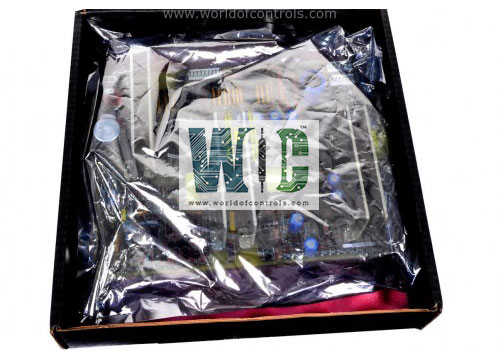SPECIFICATIONS
Part Number: IS230STURH1A
Manufacturer: General Electric
Series: Mark VIe
Function: Simplex Terminal Board
Availability: In Stock
Size: 15.9 cm high x 17.8 cm wide
Technology: Surface mount
Temperature: -30 to +65 degrees Celsius
Humidity: 5% to 90% non-condensing
Cooling: Free air convection
Product type: PCB
Country of Manufacture: United States (USA)
Functional Description
IS230STURH1A is a Simplex Terminal Board developed by GE. It is a part of Mark VIe control system. This board functions as a simplex primary turbine protection input card and is essentially a simplified version of the TTUR board. The board is intended to connect to the primary trip board within a module. It is commonly used in generator drive systems that require primary and overspeed synchronization, as well as mechanical systems that require overspeed protection. It can also be used in places where four-pulse input circuits are required, such as where a PTUR board is typically used.
Features
- DC-62 Pin Connector: Equipped with a DC-62 pin connector specifically designed for mounting a single PTUR (Potential Transformer Unit Ratio) I/O pack. This connector ensures secure and reliable connections between the board and the PTUR unit.
- Input Speed Signals: The board has the capability to accept up to four input speed signals. These input signals allow the board to monitor and process the speed information from various sources, enabling precise control and monitoring of the system.
- Euro-Style Box Connector: Includes a 48-terminal Euro-style box connector. This connector serves as a customer connection point, providing easy access for connecting external devices or additional components to the board.
- Primary Synchronization Support: Supports primary synchronization by accepting two PT inputs. These inputs receive signals from potential transformers, which are used to measure generator voltage and bus voltage. The board utilizes this synchronization information to ensure accurate and coordinated operation of the system.
- Relay Outputs for Primary Synchronization: Equipped with two relay outputs specifically designed for primary synchronization. These relays, identified as K25 and K25P, play a crucial role in providing the necessary 125 V dc power required to close the main breaker 52G. Their activation is essential for the proper functioning and control of the system.
Failure Detection
For speed input testing, an external test signal is required. The detection of normal running speed signal failure is accomplished using redundant signals applied to STUR. External test signals are required for proper feedback on PT inputs. Trip relays use forcibly guided contacts to ensure that a feedback contact accurately represents the power contact position, depending on the STUR version being tested. Breaker closure relay contact logic includes voltage-based status feedback that alerts the user to any unusual behavior.
TMR Turbine Applications
- TMR Trip Terminal Board: In a typical TMR application, a TMR trip terminal board with STUR group H3 or H4 is employed. This terminal board is specifically designed to provide trip relay outputs that are wired to the terminal board for voting. These trip relay outputs play a crucial role in initiating protective actions or emergency shutdowns in response to specific conditions or faults.
- Trip Relay Outputs: The TMR trip terminal board, in conjunction with the STUR group H3 or H4, offers trip relay outputs that are wired to the terminal board for voting. These trip relay outputs consist of two normally open contacts, allowing for redundancy and reliability in the tripping mechanism.
- TMR Normally Open Tripping Configuration: In certain scenarios, a TMR normally open tripping configuration may be desired. In this configuration, three STUR boards from group H1 or H2 are used. Each STUR board provides two parallel customer terminals at selected points. These parallel terminals enable the installation of TMR relay contact voting wiring without the need to route two wires through a single terminal. This arrangement ensures that the redundancy and fault tolerance of the TMR system are maintained effectively.
Application
- Mechanical Drives with Overspeed Protection: Suitable for mechanical drives that require overspeed protection but do not require synchronization. It provides reliable overspeed detection and protection mechanisms, ensuring the safe operation of the mechanical drives in critical applications.
- Generator Drive Systems: In generator drive systems, both overspeed and primary synchronization functions are essential. The board fulfills these requirements by offering overspeed detection and protection capabilities, along with the ability to accept two PT (Potential Transformer) inputs for primary synchronization. It enables the proper synchronization of generator voltage and bus voltage, ensuring the smooth and efficient operation of generator drive systems.
- Applications Requiring PTUR's Pulse Input Circuits: It has four pulse input circuits provided by PTUR (Potential Transformer Unit Ratio). These pulse input circuits are useful in various applications that require precise measurement and monitoring of pulse signals. Examples of such applications include turbine control systems, where the PTUR's pulse input circuits facilitate accurate speed sensing and monitoring, ensuring the stability and reliability of the turbine operation.
WOC is happy to assist you with any of your GE requirements. Please contact us by phone or email for pricing and availability on any parts and repairs.
FREQUENTLY ASKED QUESTIONS
What is IS230STURH1A?
It is a Simplex Terminal Board developed by GE
What type of terminals does the product use?
It does not use fixed box terminals. It utilizes pluggable type terminals.
How are the four configurations divided?
The four configurations are divided into two groups with on-board trip relays and two groups with DC-37 pin connectors for using an external trip board.
Are there any differences between the groups used for mechanical applications and generator applications?
Yes, components supporting generator applications are omitted from the two groups used for mechanical applications, while they are added to the groups used for generator applications.
